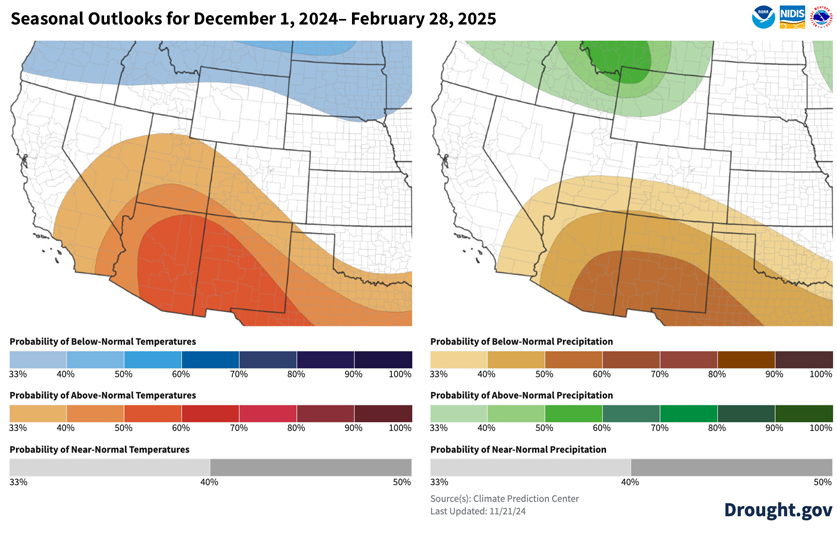Intermountain West Drought & Climate Outlook Webinar: December 10, 2024
This webinar examined current conditions for the Intermountain West and the forecasted drought conditions for Arizona, Colorado, New Mexico, Utah, and Wyoming.
For more information, please contact Dr. Gretel Follingstad (gretel.follingstad@noaa.gov).










